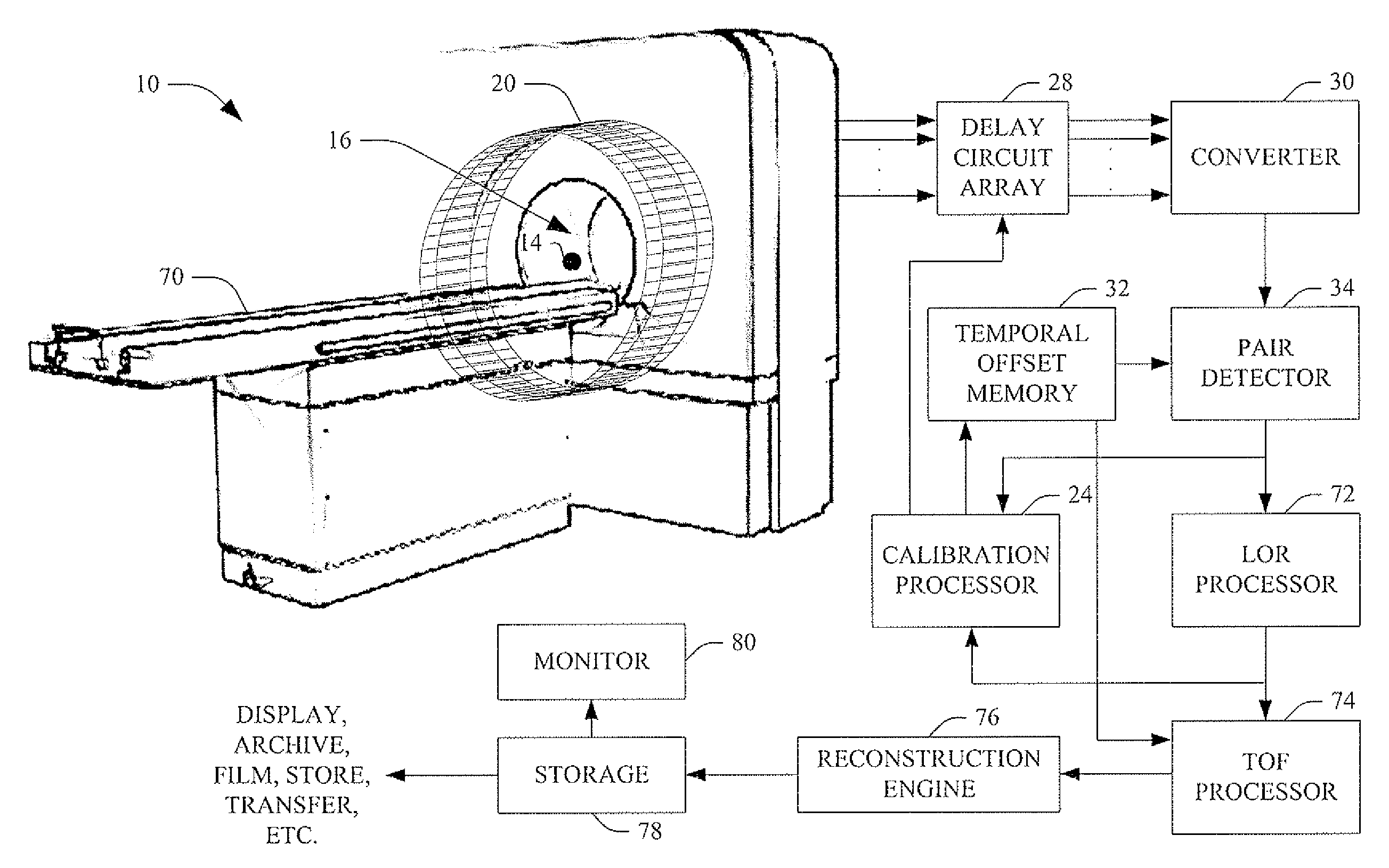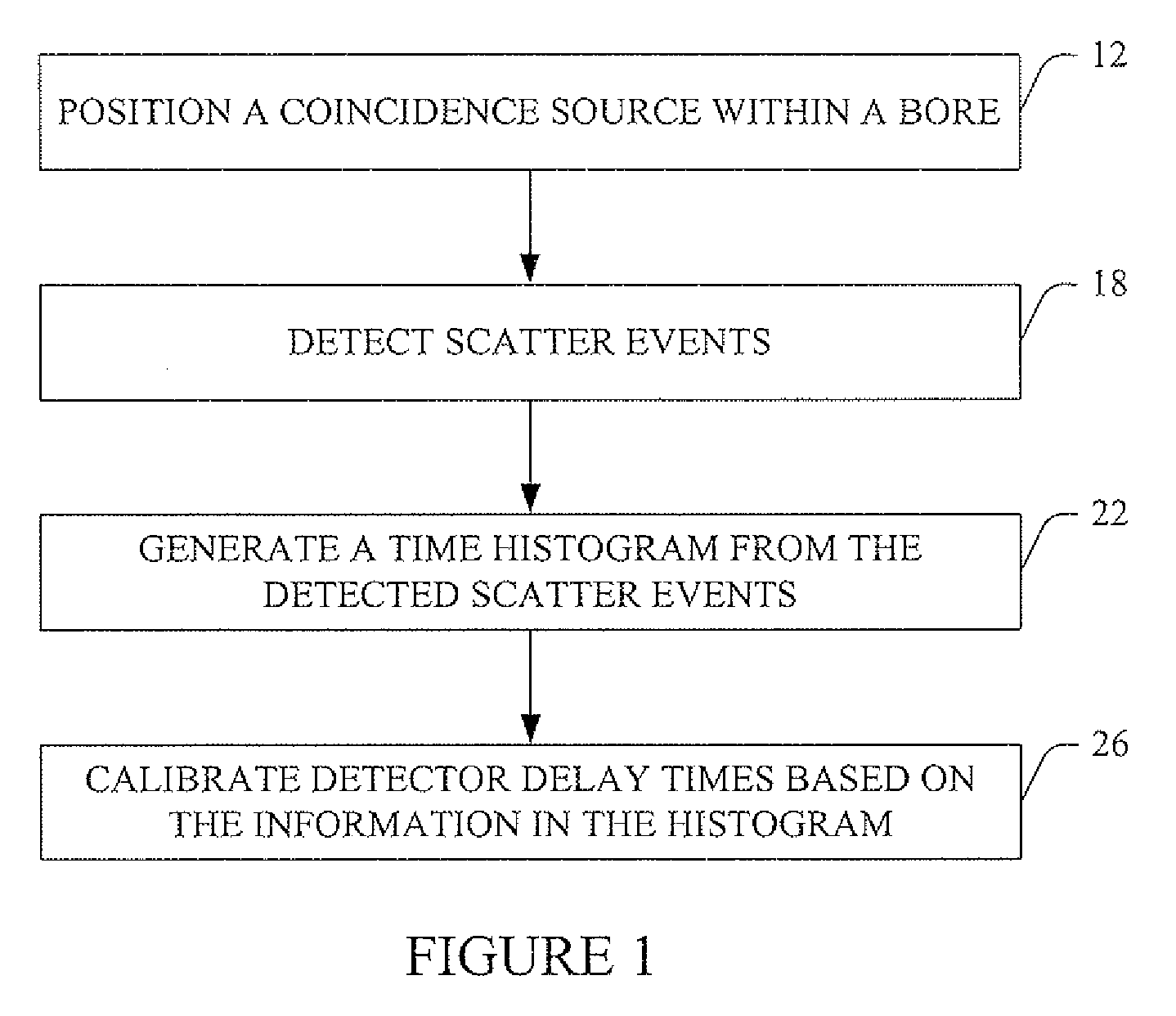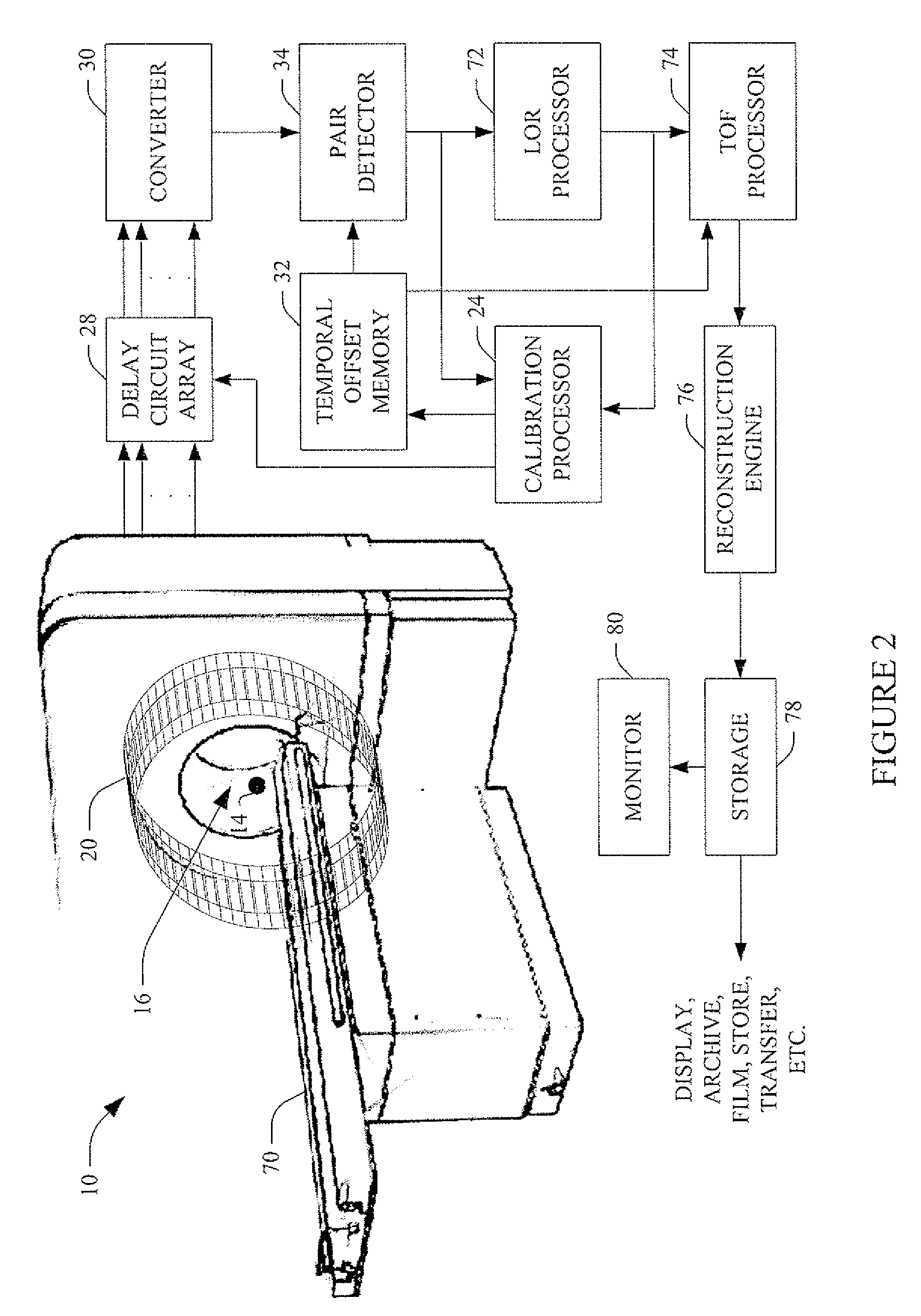Achieving accurate time-of-flight calibrations with a stationary coincidence point source
a point source and coincidence technology, applied in the field of medical imaging systems, can solve the problems of introducing various time delays into light signals, affecting the accuracy of time-of-flight calibration, so as to achieve accurate calibration and refine calibration. the effect of the delay tim
- Summary
- Abstract
- Description
- Claims
- Application Information
AI Technical Summary
Benefits of technology
Problems solved by technology
Method used
Image
Examples
Embodiment Construction
[0020]FIG. 1 illustrates a method for calibrating an imaging system 10 such as illustrated in FIG. 2. The calibration technique calibrates the coincidence timing utilized in time-of-flight (TOF) measurements such as those associated with Positron Emission Tomography (PET).
[0021] At reference numeral 12, a coincidence source 14 is placed within an imaging region 16 (or bore) of a PET scanner 10. The coincidence source can be a point source such as a scatter cylinder (e.g., plastic, steel, etc.), a scatter button (e.g., a 2.5 cm diameter plastic volume of Na-22), etc., or a line source. The coincidence source can be fixed at a position or mobile relative to the bore. In one instance, the coincidence source is fixed at about a center location of the bore. In another instance, the coincidence source is fixed at a known offset from the center of the bore. At 18, coincidence scatter radiation events are detected by detectors of a detector array 20. Such events are coincident events that ...
PUM
 Login to View More
Login to View More Abstract
Description
Claims
Application Information
 Login to View More
Login to View More - R&D
- Intellectual Property
- Life Sciences
- Materials
- Tech Scout
- Unparalleled Data Quality
- Higher Quality Content
- 60% Fewer Hallucinations
Browse by: Latest US Patents, China's latest patents, Technical Efficacy Thesaurus, Application Domain, Technology Topic, Popular Technical Reports.
© 2025 PatSnap. All rights reserved.Legal|Privacy policy|Modern Slavery Act Transparency Statement|Sitemap|About US| Contact US: help@patsnap.com



